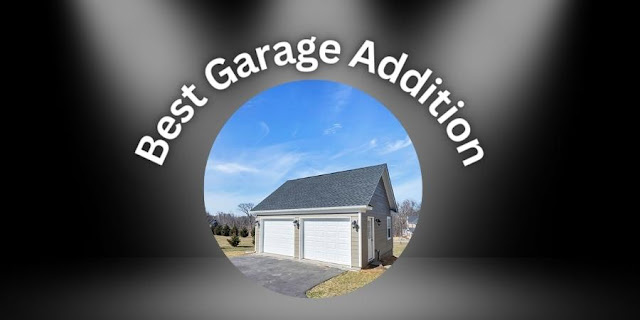Best Garage Addition Virginia
Designing and building the best garage addition depends on your specific needs and preferences. Here are some key considerations and ideas to help you create the ideal garage addition:
 |
| Best Garage Addition |
Purpose and Function:
Determine the primary purpose of your garage addition. Will it be used for parking vehicles, as a workshop, for additional storage, or as a multifunctional space?
The size of the garage should accommodate your vehicles and any additional uses. A standard two-car garage is usually around 20 feet by 20 feet.
Consider the layout and organization of the space. Plan for adequate storage, workbench space, and accessibility.
Architectural Style:
Ensure that the garage addition complements the architectural style of your home. Match materials, colors, and design elements for a cohesive look.
Zoning and Building Codes:
Check with local authorities to understand zoning regulations and building codes. Ensure your garage addition complies with these rules.
Foundation:
Decide on the type of foundation (slab, crawl space, or basement) based on your needs and budget.
Insulation:
Proper insulation is essential to regulate temperature and energy efficiency. This is especially important if you plan to use the garage for purposes other than parking.
Windows and Natural Light:
Incorporate windows and skylights to bring in natural light. This can make the space more inviting and reduce the need for artificial lighting during the day.
Electrical and Lighting:
Plan for sufficient electrical outlets and lighting fixtures, especially if you intend to use the garage as a workshop or hobby space.
HVAC System:
Depending on your climate and how you plan to use the garage, consider adding heating and cooling systems to maintain a comfortable environment.
Security:
Install secure doors and windows. Consider a security system to protect your vehicles and belongings.
Garage Door:
Choose a high-quality garage door with good insulation. Automatic garage door openers can add convenience.
Exterior Finish:
Select durable and weather-resistant materials for the exterior finish. Siding, brick, or stucco are common options.
Driveway and Access:
Ensure a well-designed driveway that provides easy access to the garage while considering landscaping and drainage.
Additional Features:
If budget allows, consider adding extra features such as a car lift, custom cabinetry, a sink, a bathroom, or a loft for additional storage or a home office.
Permits and Contractors:
Work with experienced contractors and obtain the necessary permits to ensure a smooth construction process.
Landscaping:
Plan for landscaping around the garage to enhance its curb appeal. This could include planting trees, shrubs, or creating a paved pathway.
The "best" garage addition will ultimately depend on your specific needs, budget, and aesthetic preferences. It's essential to carefully plan and consider all aspects of the project to create a space that adds value to your home and meets your requirements. Consulting with professionals, such as architects or builders, can be helpful in achieving your goals.

The size of the garage should accommodate your vehicles and any additional uses. A standard two-car garage is usually around 20 feet by 20 feet.
ReplyDeleteThe size of the garage should accommodate your vehicles and any additional uses. A standard two-car garage is usually around 20 feet by 20 feet.
ReplyDeleteConsider the layout and organization of the space. Plan for adequate storage, workbench space, and accessibility.